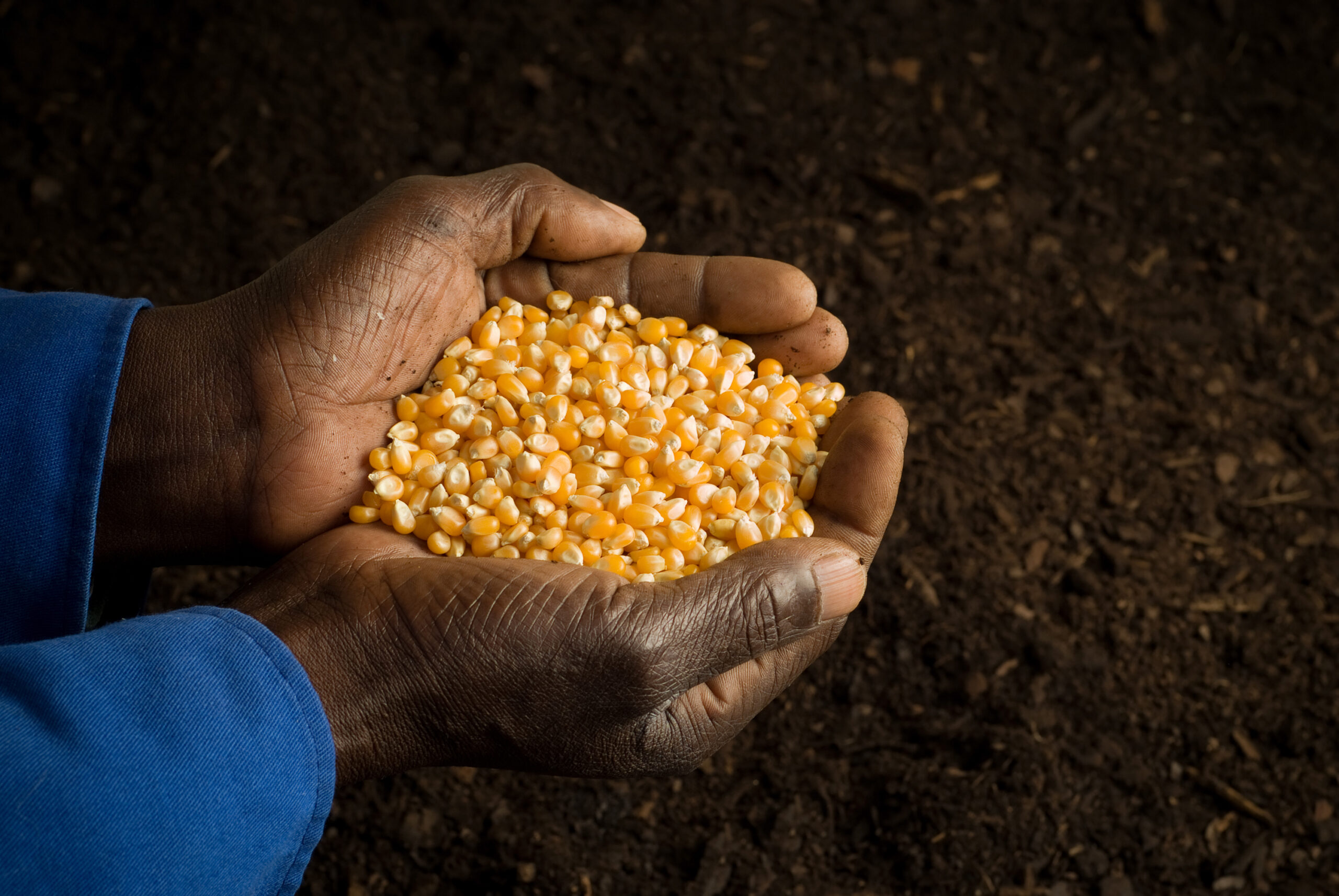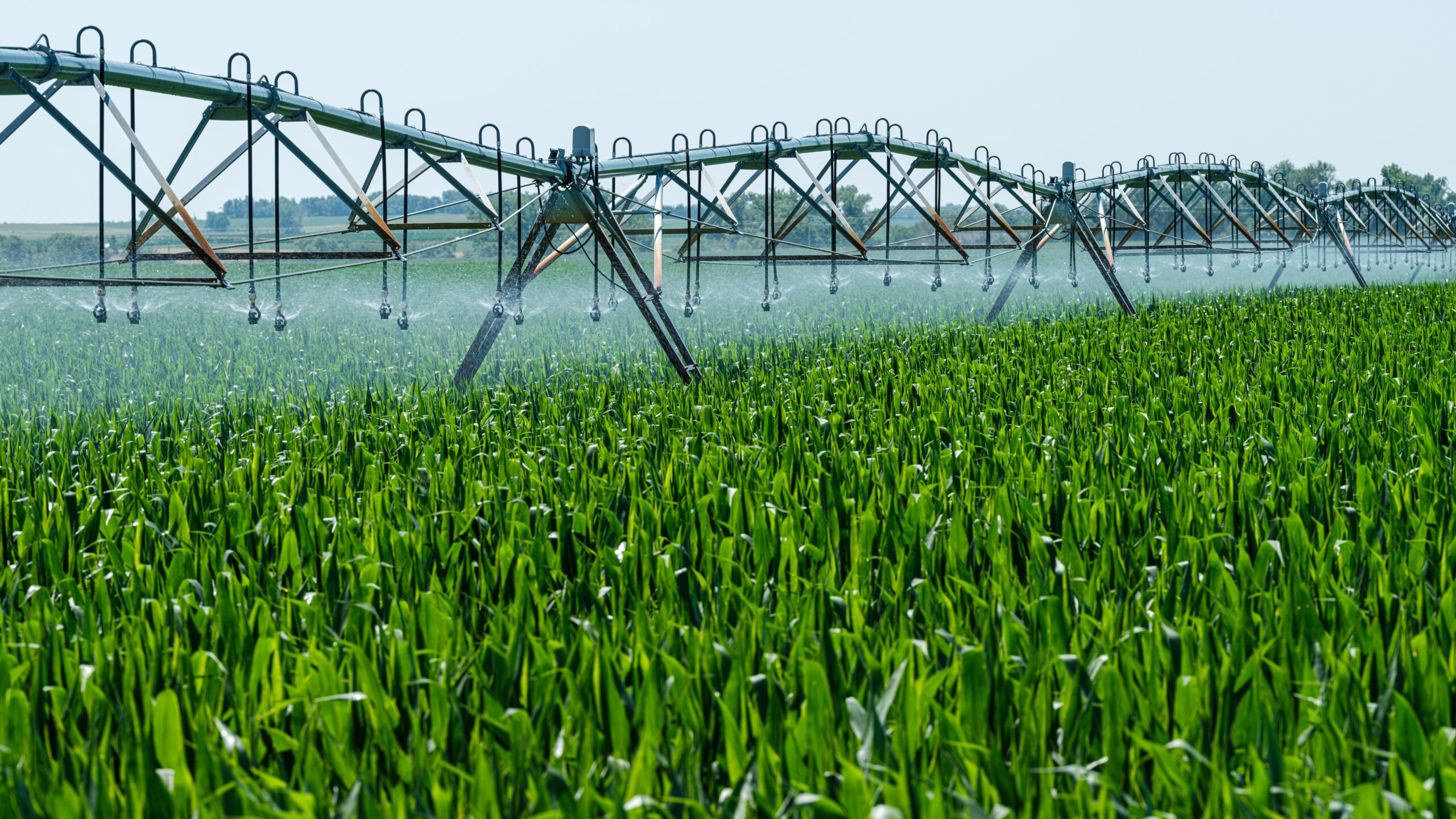Relationship between climate change and increased food prices
Climate change and extreme weather events are intensifying and disrupting our fragile food system. The cascading effects of droughts, storms, flooding, rising sea levels and increased pests and disease all impact our ability to produce food, leading to food insecurity and increased food prices.
These conditions will continue to worsen because of human-induced climate change. Human-produced greenhouse gas (GHG) emissions continue to rise and heat our planet, mainly through burning coal, oil and gas. Droughts that used to occur just once a decade are now 70 per cent more frequent than in the pre-industrial era. This is just one of the consequences of climate change.
Over the coming decades, crop yields globally could fall about 30 per cent due to climate change, while food demand could rise 50 per cent, says the UN. Without urgent action to address rising GHG emissions and our climate-vulnerable food system, declines in global yields will continue to pose an increasing threat to food supply and affordability. These conditions also exacerbate instability and conflict, due to competition over fertile land and water resources.
“The science is clear”, UN Special Rapporteur on Extreme Poverty and Human Rights Olivier De Schutter said. “Without a major turnaround in carbon emissions and the way we farm, we are likely to see mass crop failures and food system collapse.” It is those living in poverty who would be “hit first and hardest by a crisis they did not cause”, he warned.
Food production and prices are vulnerable to climate change
The world’s food system relies on a stable climate, and production is incredibly sensitive to climate variabilities. As far back as 2007, research has found that changes in the climate were responsible for around 30 per cent of year-to-year crop yield fluctuations. This has contributed to increasingly volatile food prices over recent decades. For example, in the 12 months before August 2021, world food prices increased 31 per cent. “Climate change is coming right into our dining room tables”, agronomist and climatologist Cynthia Rosenzweig told CNN Business.
Our climate is changing rapidly, faster than plants and animals can adapt. Furthermore, a lack of genetic diversity in modern agricultural production is making our food system weaker against the impacts of climate change and more vulnerable to shortages and price shocks. “Just three crops — wheat, maize and rice — make up nearly half of the world’s food supply. All are vulnerable to extreme weather conditions like drought and heat”, said Stefan Schmitz, Executive Director of Crop Trust. “Without some help, many of our most beloved foods will not be able to withstand climate change, which is already leading to crop failures, rising food prices and surges in hunger and malnutrition worldwide.”
The European Central Bank has coined the term for climate-induced food price increases: “climateflation” – also identified as “heatflation” by journalist Kate Yoder. “We all know our grocery bills are going up”, Bob Keefe, author of Climatenomics, told Yoder. “Part of the reason is that when you lose crops to storms or drought or flooding, prices are going to go up.” Or as David A. Super summarises: “If we wish to control inflation, we must address climate change now.”
Climate change and increased food prices at home in South Africa
South Africa is particularly vulnerable to the effects of climate change, where temperatures have been increasing at twice the global average rate. The effects of climate change have already hit the country hard, witnessed in the 2007 drought and April’s devastating floods, which were made twice as likely due to global warming. Cape Town also recorded its highest ever temperature at 45.2°C in January of this year — breaking the previous record by almost +3°C.
There have been immediate consequences for food supply and prices in South Africa due to these climate events. For example, major price spikes of maize followed the 2016 and 2020 droughts. Furthermore, following the 2009 and 2016 droughts, overall food price inflation surged by almost 15 per cent.
Based on the Intergovernmental Panel on Climate Change (IPCC) warming projections, researchers found that South Africa will continue to experience reduced rainfall and increased temperatures, which could cause a profound loss in agricultural production of between 15 and 50 per cent through to 2080. These projections have serious implications for the nation’s sustainable development goals to improve livelihoods, achieve food and nutrition security and reduce poverty.
Because South Africa’s climate is heating faster than the global average, a temperature rise of 3°C could equate to 6°C of warming in South Africa, explains Professor Francois Engelbrecht, climatologist and lead author of a recent IPCC report. “If we reach a global increase of 3°C, both the maize crop and the cattle industry in southern Africa are likely to collapse, due to the combined workings of more frequent droughts and heatwaves of unprecedented intensity and duration”, he warned. “This is the single biggest risk for South Africa at the moment in terms of climate change, and in the next decade, this risk will keep on growing.”
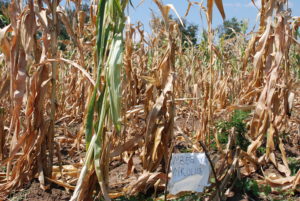
Explaining “climateflation”: How climate change impacts food production and increases prices
Wherever there are food production shocks, “climate change is the common thread“, according to UN experts. Its effects can trigger or worsen these impacts on food production, which devastate food availability, livelihoods and human health. There are many interconnected consequences of climate change on food production, security and prices. “As the world experiences increasingly severe climate impacts on agricultural production, many of our food systems are being pushed to the breaking point. In short, climate change is putting food production at risk.”
Extreme heat
Maize, wheat and sugarcane are all important crops grown in South Africa, critical for income and food security. However, these are all threatened by future increases in temperature. Globally, for every degree of global temperature rise, there are reductions in yields of maize by 7.4 per cent, wheat by 6.0 per cent, rice by 3.2 per cent and soybean by 3.1 per cent. But, some regions are more affected than others. For example, in West Africa, wheat yields could fall by up to 25 per cent if temperatures rise by 1.5°C.
A hotter planet also affects livestock farming. For each temperature increase of 1°C above an animal’s thermal “comfort zone”, they consume three to five per cent less food, according to the IPCC. This reduces both their productivity and fertility. Higher temperatures also enhance animals’ susceptibility to disease. Livestock in South Africa are already vulnerable to heat stress, researchers suggest. Furthermore, longer-term climate projections find conditions are likely to worsen, impacting the health of animals and posing a “severe” threat to farmers’ income.
Extreme heat is also impacting our ocean’s ability to provide food. South Africa’s coastal waters are warming, which along with ocean acidification and declining oxygen levels, will negatively impact key fisheries and aquaculture (seafood farming) production.
Furthermore, extreme heat poses an increased risk of heat stress on farmworkers. For example, in sub-Saharan Africa, the heat stress associated with 3°C global warming could reduce agricultural labour capacity by 30-50 per cent. On top of the detrimental impact on human health, this would lead to increased food prices and require significantly higher levels of employment in the farming sector.
Drought
South Africa suffers some of the most extreme droughts in the world, and multiyear droughts are common. But, almost 80 per cent of all South Africa’s field crops are planted on non-irrigated lands, meaning their yields are entirely dependent on rainfall conditions. With rainfall projected to decrease in many parts of Africa and the incidence of drought already rising rapidly, farmers living in dry regions will struggle to find enough water to keep their crops and livestock alive.
The effects of drought are having a grave impact on subsistence farmers, which account for almost 15 per cent of all households. “We sometimes do not get anything from what we planted, absolutely nothing to harvest from these crops…hunger is a common problem here. Because of drought in our community, farming is no longer attractive, especially to the youth”, said one 54-year-old farmer interviewed by researchers in 2021.
Climate-induced drought is also a contributing factor to wildfires due to a hotter and drier environment. Wildfires have destroyed thousands of hectares of grazing and croplands in South Africa, putting further pressure on food production and availability. The cost of South Africa’s fire incidents in 2015 came to more than R1 billion.
Floods, storms and cyclones
Floods, storms and cyclones can be devastating for agriculture. They can cause a loss of crops and livestock, contaminate water bodies, damage infrastructure and degrade land and soil. Even less damaging storms can be incredibly harmful because crops and livestock are unable to survive for long after fields are inundated with heavy rainfall and floodwaters.
This January, South African farmers suffered “disastrous downpours” in regions that struggled with drought in previous years. High rainfall caused extensive crop damage, with 20 per cent of grain producers losing 60 per cent of their white maize plantings due to water damage.
More frequent and intense tropical cyclones are also expected to make landfall in South Africa as a result of climate change. Professor Engelbrecht warns that should a category three to five hurricane hit land, the damage would be unprecedented. “It will bring complete chaos and destruction as we’ve never seen before… The flooding will be enormous”, he said.
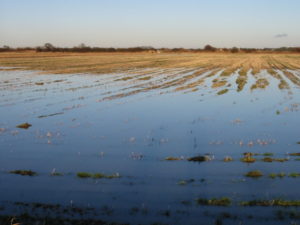
Desertification, soil degradation and erosion
Experts describe desertification, when fertile land becomes desert, as “the greatest environmental challenge of our time”. It leaves soils less able to support crops, livestock and wildlife, and 91 per cent of South Africa’s land area is prone to desertification. A warmer climate can also accelerate carbon decomposition in soils, leaving them depleted and less able to retain water and nutrients. This means climate change is also degrading land, making the soil less productive. Land degradation affects almost 60 per cent of South Africa’s surface.
Soil erosion is another enemy of agriculture, made worse by unchecked climate change. Soil erosion is caused both by the impact of rain, as well as water runoff caused by extreme rainfall. An IPCC report found that some soils are eroding up to 100 times faster than they are able to form. Moreover, the future risk of erosion will only increase with climate change, resulting in an ongoing decrease in agricultural production. One study estimates global economic losses from soil erosion are USD $8 billion, due to decreased soil fertility and crop yields and increased water usage.
Saltwater intrusion
As the world warms, saltwater intrusion from melting glaciers and rising seas also threatens the world’s food supplies, and South Africa is a hotspot for climate-induced salinisation. Saltwater intrusions can permanently flood and damage cropland, impact yields and force farmers from their land.
Climate change will also drive salt scourges far from coastal regions. This is particularly the case for arid areas, where higher temperatures result in faster evaporation rates. Combined with longer dry seasons and droughts, the current trace levels of naturally occurring salt could reach concentrations where crops cannot survive and freshwater ecosystems collapse.
Shifting seasons
Agriculture relies on the wet season timing – the length and amount of rainfall dictate when to sow crops and the appropriate crops that mature before the season ends. But, changing rainfall seasons disrupt crop planting dates and management, for example, later wet season start dates and less rainfall require additional planning to produce yields.
Furthermore, higher temperatures shorten the plant growth season and inhibit the development of plants, which impacts crop yield and quality. For example, changes in soil temperatures can affect the plant roots responsible for water and nutrient uptake, resulting in stunted crop growth.
Pollinators
Up to 35 per cent of global crop production volume relies on pollinators, including certain agricultural crops and most fruits and vegetables. This means pollinators, typically insects, birds and bats, play a key role in food security globally. The global value of pollination services was estimated as between USD $195 billion to USD $387 for the year 2020, while another study valued pollination services as high as USD $1 trillion annually.
Pollinators, like many species, are sensitive to climatic changes, primarily increased temperatures. An average increase in global temperature by 1.5-2.5°C would threaten approximately 20-30 per cent of known pollinator species, risking extinctions. Moreover, where crop production may shift to more suitable areas due to climate change, most pollinators may not be able to adapt to pollinate in these new environments.
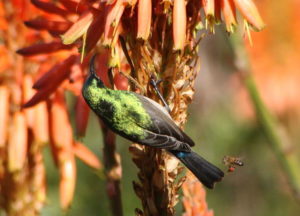
Agricultural pests
Climate change is increasing the destructiveness of the agricultural pests that ravage crops. Warming temperatures and shorter winters also make it easier for pests to spread into new regions and reproduce more quickly and more often. For example, climatic changes were the main drivers of East Africa’s 2019 locust plagues. This “decimated crops and pastureland, leaving 13 million people at risk of severe food insecurity”, according to the International Livestock Research Institute.
As much as 40 per cent of the world’s crop production is currently lost to pests, according to the UN. They cost countries at least USD $70 billion annually and are also one of the main drivers of biodiversity loss. Furthermore, plant diseases have tripled over the past decade, with climate change being the second biggest driving factor. Each year, plant diseases rob the global economy of more than USD $220 billion.
Our food system is a leading driver of climate change
Our food system is both a victim and a driver of climate change. It is responsible for one-third of human global GHG emissions, due to vast land use changes, the use of emissions-intensive fertiliser and methane-emitting livestock — among many other polluting processes. Furthermore, our food system is the cause of around 70 per cent of the biodiversity loss on land and uses up 50 per cent of freshwater resources. The use of fertiliser and pesticides are also inflicting long-term damage to soil health and pollinator populations. These combined effects inhibit our planet’s ecological life support systems that provide natural resilience against the effects of climate change. The result is a hotter, more polluted and depleted and less biodiverse environment, which is increasingly inhospitable for crops and animals to survive, and gravely threatens our ability to produce food in the future.
This impact also means that food production and farming have a key role to play in mitigating the effects of climate change and ecological degradation. “We must radically transform our agricultural systems”, write UN experts, to avoid the most devastating impacts of climate change and secure a safe and sustainable future for food.
Protecting food supplies and prices in a disrupted climate
Building resilience in our climate-disrupted food system and mitigating increased food prices require a number of short and long-term solutions working together. For example, currently, 45 per cent of the total food available in South Africa is wasted. In a country where almost 10 million people go hungry every week, improving the distribution and sustainability of the food supply chain would help South Africa increase its overall food security significantly.
Furthermore, better soil management can increase farmers’ productivity and incomes, providing an important buffer against climate shocks for food producers. Agricultural insurance that provides farmers with security to overcome climatic events will also help food growers continue their key role in food security. Some regions are in their ninth dry year, but high costs and low availability mean just 20 per cent of the country’s commercial grain farmers have drought insurance. At a time when droughts are becoming longer and harsher, farmers and insurers alike say the insurance system is broken.
But, the most effective, long-term way to safeguard food production and stabilise prices is to address the increasing issue of climate-driven food shocks. “We have to learn how we can adapt the food supply system at a global and regional level in a relatively short amount of time, whilst at the same time, reducing greenhouse gas emissions and our impact upon the environment”, writes Professor John Roy Porter, a professor of agriculture and climate change. This also involves improving our global food system’s resilience to climate change and developing early warning systems to warn us when nature is about to “run wild”.

Related Articles
Climate change, hunger and South Africa’s future
A new climate change impact synthesis report highlights the effects of climate change on South Africa and its impact on people’s lives.
Advancing agriculture through green energy
If it were not for the ingenuity of South African farmers who make alternative green energy plans, the entire agricultural sector would be under much more pressure.

